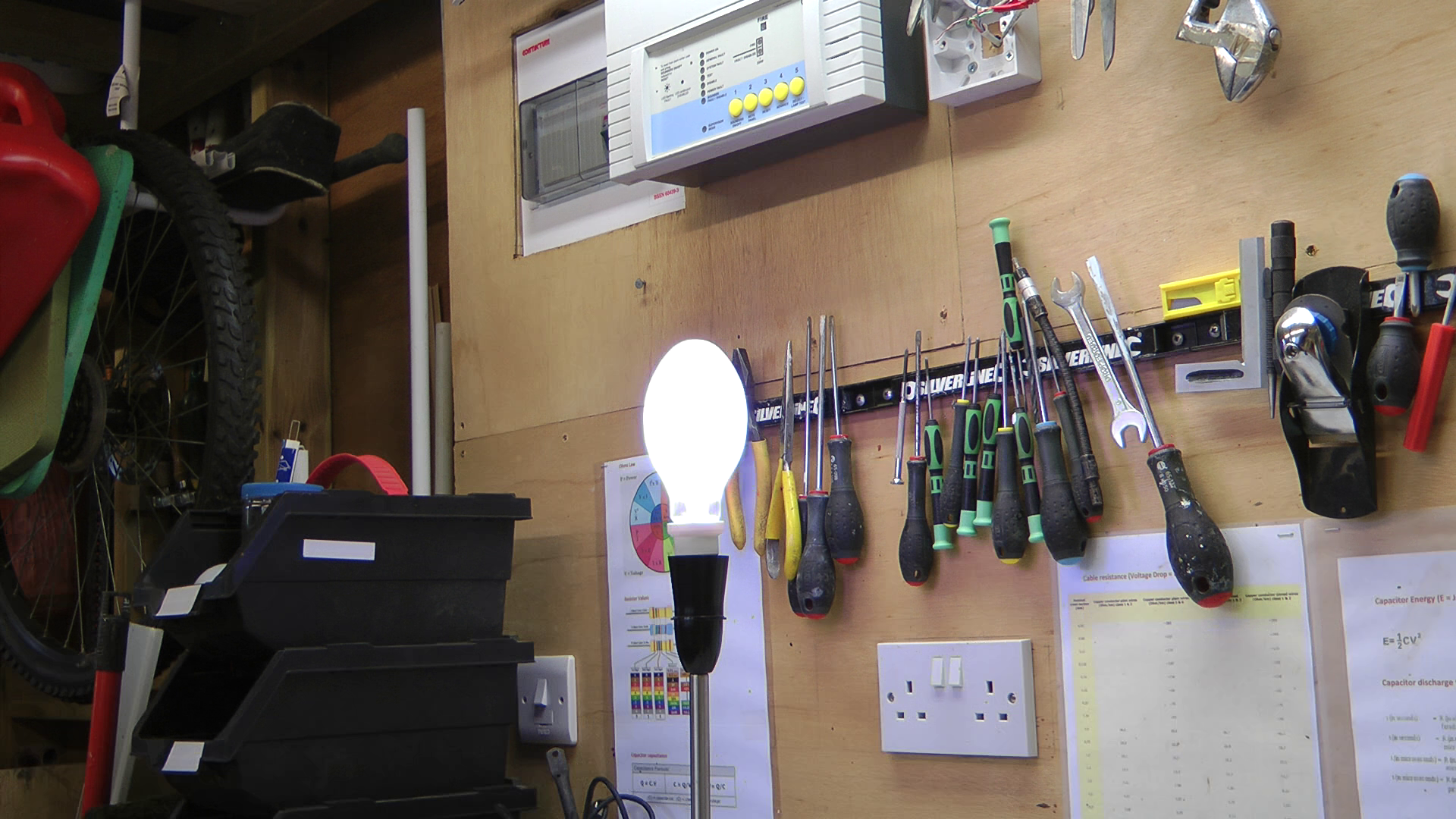So today I did a little experiment and thought I would see what would happen if one powered up a 70W HPS bulb with an internal ignitor directly on the 230v mains without using a ballast.
Sadly not much happened other than a brief flash for a fraction of a second before the MCB for the circuit tripped. No catastrophic failure or bright luminous prolonged overload.

Below is a picture of the bulb lit up taken from a frame of the video I filmed. Frame represents 1/50th second and was the only frame where the bulb was noticeably lit up.
At least one now knows what happens in such a scenario.
Also, I don't recommend one tries what I tried in case such a bulb explodes - I turned it on remotely using X10 as a safety precaution.
Regards: Elliott.
Sadly not much happened other than a brief flash for a fraction of a second before the MCB for the circuit tripped. No catastrophic failure or bright luminous prolonged overload.
Below is a picture of the bulb lit up taken from a frame of the video I filmed. Frame represents 1/50th second and was the only frame where the bulb was noticeably lit up.
At least one now knows what happens in such a scenario.
Also, I don't recommend one tries what I tried in case such a bulb explodes - I turned it on remotely using X10 as a safety precaution.
Regards: Elliott.



